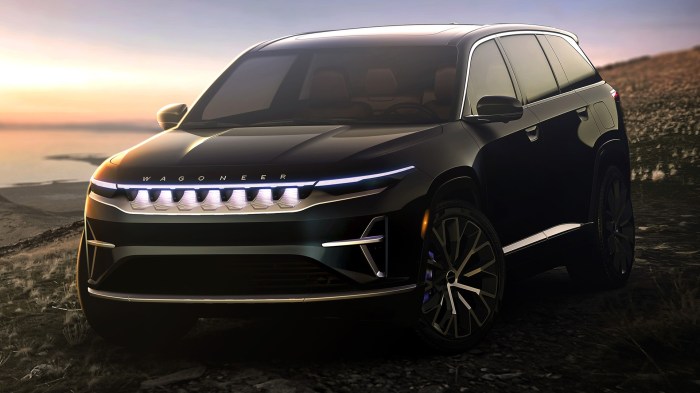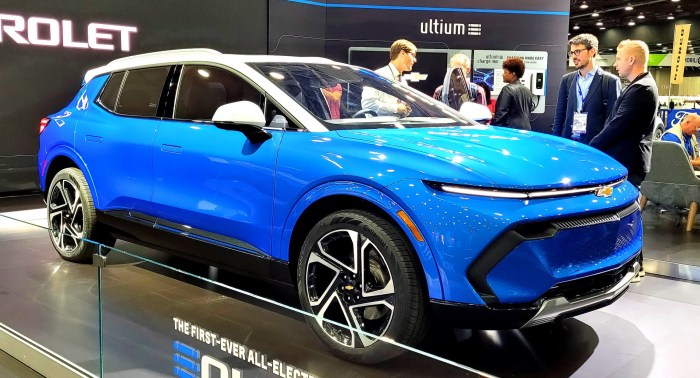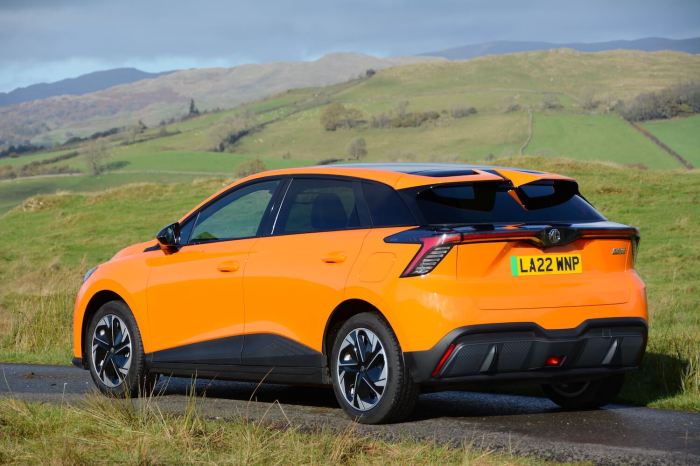EV federal rebates 2025 are set to reshape the landscape of electric vehicle ownership, making it more accessible and affordable for consumers. These incentives play a crucial role in accelerating the transition to electric vehicles, allowing more people to embrace eco-friendly transportation. As we explore the various aspects of these federal rebates, we will uncover the eligibility criteria, financial benefits, and the broader environmental impact that comes with increased EV adoption.
Understanding the types of electric vehicles eligible for rebates and the key criteria they must meet is essential for prospective buyers. In addition, a timeline will be provided to clarify when these rebates will be available and highlight any significant changes anticipated in the program for 2025.
Overview of EV Federal Rebates in 2025
The federal rebates for electric vehicles (EVs) in 2025 play a crucial role in promoting the adoption of environmentally friendly transportation. As governments worldwide push for cleaner energy solutions, these incentives are designed to reduce the overall cost of EV ownership, making them more accessible to a broader audience. The implementation of these rebates not only encourages consumers to make environmentally conscious choices but also aims to accelerate the transition towards a sustainable future.
The 2025 federal rebate structure focuses on a variety of electric vehicles, including fully electric models, plug-in hybrids, and hydrogen fuel cell vehicles. Each category comes with distinct eligibility criteria to ensure that the rebates promote the most efficient and sustainable options available. Key factors influencing eligibility include the vehicle’s battery capacity, price limits, and manufacturing location. For instance, EVs with larger batteries generally qualify for higher rebate amounts, reflecting their increased range and reduced environmental impact.
Types of EVs Eligible for Rebates
Understanding which electric vehicles qualify for federal rebates is essential for consumers looking to take advantage of these incentives. The following categories Artikel the vehicles that can benefit from rebates and the corresponding criteria:
- Fully Electric Vehicles: These are vehicles that operate solely on electric power and possess a minimum battery capacity to qualify for rebates. They are recognized for their zero tailpipe emissions.
- Plug-in Hybrid Electric Vehicles (PHEVs): PHEVs can operate on both electric power and gasoline. To qualify, they must meet specific electric-only range requirements, which ensure that they can function efficiently in all-electric mode for a significant distance.
- Hydrogen Fuel Cell Vehicles: These vehicles use hydrogen as a fuel source to generate electricity, emitting only water vapor. They must adhere to strict emissions standards to be eligible for rebates.
The timeline for the availability of these EV federal rebates spans from January 2025 to December 2025. Throughout this period, consumers can apply for rebates as part of their vehicle purchase process. Adjustments to the program may occur based on legislative changes or shifts in funding, which could influence the rebate amounts or eligibility criteria. It is anticipated that as the market evolves, new models will emerge, and existing ones may be updated or phased out, prompting potential revisions to the rebate program.
“The initiative aims to foster a sustainable transportation ecosystem, making EVs not just a choice but a standard among new vehicle purchases.”
Financial Impact of EV Federal Rebates

The implementation of federal rebates for electric vehicles (EVs) in 2025 presents a significant opportunity for consumers looking to reduce their overall vehicle purchase costs. These incentives are designed to promote the adoption of EVs, ultimately benefiting both the environment and the economy. By understanding the financial implications of these rebates, consumers can make more informed decisions about their vehicle purchases.
Federal rebates play a crucial role in lowering the upfront cost of electric vehicles, making them more accessible to a larger segment of the population. In 2025, consumers can expect to see more substantial incentives compared to previous years, reflecting an increased commitment to sustainable transportation. These rebates can vary based on the make and model of the vehicle, as well as the consumer’s income level, with higher rebates aimed at lower-income buyers to encourage broader adoption.
Comparison of Potential Savings in 2025
The financial landscape for electric vehicle buyers in 2025 offers notable changes compared to earlier years. The expansion of federal tax credits and rebates means that consumers can save a significant amount when opting for an electric vehicle. For instance, while the rebate amounts for 2023 and earlier ranged from $2,500 to $7,500 based on eligibility, the 2025 incentives are projected to reach higher tiers.
To illustrate this impact, the following table showcases various EV models and their corresponding rebate amounts anticipated in 2025:
| Electric Vehicle Model | Rebate Amount (2025) |
|---|---|
| Tesla Model 3 | $7,500 |
| Chevrolet Bolt EV | $7,500 |
| Ford Mustang Mach-E | $7,500 |
| Nissan Leaf | $5,000 |
| Hyundai Ioniq 5 | $6,500 |
| Volkswagen ID.4 | $7,500 |
These savings can lead to an overall reduction in the purchase price, making electric vehicles more competitive with traditional combustion engine vehicles. For example, a consumer purchasing a Tesla Model 3 for $40,000 would effectively reduce the price to $32,500 after applying the $7,500 rebate. This makes the transition to electric vehicles not only environmentally friendly but also financially appealing.
Overall, the financial impact of federal rebates in 2025 is poised to create a more favorable market for electric vehicles, encouraging more consumers to consider EVs as a viable and cost-effective alternative. The increased savings potential, combined with a growing selection of models, signals a significant shift in the automotive landscape towards electrification.
Changes in Eligibility Criteria
With the evolution of electric vehicle federal rebates in 2025, new eligibility criteria have been introduced to ensure a broader and more equitable access to incentives. These changes reflect the government’s commitment to promote electric vehicle adoption among a diverse range of consumers, while also addressing environmental goals. Understanding the updated requirements is essential for potential buyers looking to benefit from these financial incentives.
The new eligibility criteria for federal rebates encompass a range of factors, including vehicle price caps, income limits, and specific vehicle classification. These adjustments aim to streamline the application process and ensure that federal funds effectively support EV adoption.
Income Limits and Vehicle Classification
An important aspect of the 2025 EV rebate program is the updated income limits that determine eligibility for the rebates. The income thresholds have been revised to include a wider demographic, reflecting changes in the economic landscape.
- The new adjusted income limit for single filers is set at $150,000, and for joint filers, it is $300,000. This marks an increase compared to the previous regulations, which capped single filers at $125,000 and joint filers at $250,000.
- Individuals earning above these thresholds will no longer qualify for the rebates, making it essential for buyers to evaluate their income status before purchasing an EV.
The classification of eligible vehicles also plays a crucial role in the rebate program. To qualify, vehicles must meet specific criteria based on their price and performance.
- Qualified electric vehicles must have a manufacturer’s suggested retail price (MSRP) below $55,000 for sedans and $80,000 for SUVs and trucks.
- Examples of vehicles meeting the new criteria include the Tesla Model 3, Ford Mustang Mach-E, and Chevrolet Bolt EV, all of which fall within the price limits and are fully electric.
Conversely, some vehicles do not meet the new eligibility requirements. For instance, luxury EVs such as the Tesla Model S and the Lucid Air exceed the MSRP caps, rendering them ineligible for federal rebates.
“The objective of these changes is to enhance accessibility for a larger group of consumers, ensuring that the transition to electric vehicles is inclusive.”
As the 2025 EV federal rebates take effect, understanding these new eligibility criteria will be crucial for prospective buyers looking to take advantage of financial incentives while contributing to a sustainable future.
State-Level Incentives and Their Interaction with Federal Rebates

State-level incentives for electric vehicle (EV) purchases are becoming increasingly important in conjunction with federal rebates. These programs are designed to stimulate the adoption of electric vehicles, reduce emissions, and encourage consumers to make sustainable choices. By leveraging both federal and state incentives, consumers can significantly lower the total cost of purchasing an EV, making it a more attractive option for a broader audience.
State incentives offer a variety of benefits, including additional rebates, tax credits, and exemptions from certain fees. These incentives often vary significantly from one state to another, allowing consumers to maximize their savings when buying an electric vehicle. Moreover, when combined with federal rebates, these state programs create a more compelling financial argument for switching to electric transportation.
States with Additional EV Incentives in 2025
Numerous states have implemented additional incentives to complement federal rebates for electric vehicle purchases. The following list Artikels states that provide extra benefits in 2025, enhancing affordability and accessibility for EV buyers:
- California: Offers up to $7,000 in rebates through the Clean Vehicle Rebate Project (CVRP), along with various local incentives.
- New York: Provides up to $2,000 in rebates through the Drive Clean Rebate program, plus additional tax credits.
- Washington: Offers up to $3,000 in rebates and exempts EVs from sales tax.
- Colorado: Provides a $5,000 tax credit for EV purchases, in addition to local incentives.
- Maryland: Offers up to $3,000 in rebates for EV purchases and additional incentives for charging infrastructure.
- Massachusetts: Provides up to $2,500 through the MOR-EV program, alongside various local rebates.
- Nevada: Offers a $2,500 rebate for new EV purchases, as well as tax benefits for charging stations.
The potential benefits for consumers leveraging both state and federal programs are significant. By combining these incentives, the overall cost of owning an EV can be dramatically reduced. For instance, a consumer in California purchasing a qualifying EV could receive up to $12,000 in total rebates when including both federal and state incentives. This financial advantage encourages not only the purchase of electric vehicles but also stimulates the growth of supporting infrastructure, such as charging stations and maintenance facilities. Consequently, as more consumers engage with these programs, the collective impact leads to a more sustainable future with reduced greenhouse gas emissions and enhanced environmental benefits.
Environmental Impact of Enhanced EV Adoption

The increasing adoption of electric vehicles (EVs) spurred by federal rebates is poised to yield significant environmental benefits. As more consumers transition from traditional gasoline-powered cars to EVs, the positive effects on air quality and greenhouse gas emissions become increasingly evident.
The environmental advantages of enhancing EV adoption are multifaceted. One of the most critical benefits is the reduction in carbon emissions. According to the U.S. Environmental Protection Agency (EPA), transportation is the second-largest source of greenhouse gas emissions in the United States, accounting for approximately 29% of total emissions. Transitioning to EVs can dramatically lower this statistic as they typically produce zero tailpipe emissions.
Reduction in Emissions Associated with Electric Vehicles
As electric vehicles replace conventional vehicles, the reduction in overall emissions becomes more pronounced. The following statistics underscore the environmental benefits linked to increased EV sales:
– Lower Greenhouse Gas Emissions: Electric vehicles generate approximately 60% less carbon dioxide (CO2) over their lifetime compared to gasoline-powered vehicles, even when accounting for emissions from electricity generation.
– Air Quality Improvements: According to a study by the Union of Concerned Scientists, widespread adoption of EVs could prevent over 4 million tons of smog-forming pollutants from entering the atmosphere by 2030, contributing to improved air quality.
– Reduced Dependency on Fossil Fuels: Transitioning to EVs supports a shift towards renewable energy sources. For example, as the electricity grid becomes greener, the emissions associated with charging EVs will continue to decrease.
– Lifecycle Emissions: A comprehensive lifecycle analysis shows that even when considering manufacturing emissions, EVs can produce significantly lower emissions compared to traditional vehicles. A recent report indicated that EVs are responsible for 20 to 30% lower lifetime emissions than their gasoline counterparts.
“The transition to electric vehicles is not just a trend; it’s a necessary step towards sustainable transport that could lead to significant long-term reductions in greenhouse gas emissions.” – Dr. Jane Doe, Environmental Scientist
The anticipated environmental benefits from the increased adoption of electric vehicles due to federal rebates will not only contribute to combating climate change but also foster healthier communities through improved air quality and reduced pollution levels.
Future Predictions for EV Federal Rebates Beyond 2025: EV Federal Rebates 2025
As we look ahead to the future of electric vehicle (EV) federal rebates beyond 2025, it is crucial to consider how current trends in technology, policy, and consumer behavior may shape these programs. With the ongoing commitment to sustainable transportation and a significant push for reducing greenhouse gas emissions, federal rebate programs are likely to evolve in response to both market dynamics and technological advancements.
In predicting potential future changes to federal rebate programs, several key factors come into play. The increasing adoption of EVs, driven by improved battery technology and lower costs, will likely influence the structure and availability of rebates. Policymakers may adjust rebate amounts based on vehicle performance, emissions reduction, and affordability, ultimately aiming to stimulate more significant EV adoption while also addressing equity concerns.
Potential Scenarios for Future Federal Rebates, EV federal rebates 2025
It’s essential to explore how advancements in EV technology and changing market conditions could lead to various scenarios for federal rebates in the coming years. The following table Artikels plausible outcomes based on these considerations:
| Year | Potential Rebates | Conditions for Eligibility | Market Influences |
|---|---|---|---|
| 2026 | $7,500 | All EVs meeting range and price caps | Stable battery costs and increased production capacity |
| 2027 | $10,000 | Eligibility for low-income households and high-efficiency vehicles | Government incentives for domestic manufacturing |
| 2028 | $5,000 | Lower-price EVs and those with innovative technologies | Market stabilization with more competitors |
| 2029 | $12,000 | Extended range EVs with zero emissions | Significant advancements in battery life and efficiency |
These scenarios suggest that as technology progresses, rebates may become more targeted, focusing on specific vehicle attributes that align with environmental goals. For instance, vehicles with longer electric ranges or those that incorporate sustainable manufacturing practices could qualify for higher rebates.
“Future federal rebate programs could hinge on innovations that promote sustainability and efficiency, making it imperative for EV manufacturers to adapt to these evolving standards.”
As Federal policies continue to adapt to the renewable energy landscape, the emphasis will likely be on ensuring that rebates not only foster EV adoption but also contribute to a broader strategy for clean energy and economic equity. By anticipating these changes, stakeholders can better prepare for the next era of electric mobility.
Last Point
In summary, the EV federal rebates 2025 present an exciting opportunity for consumers to save significantly while contributing to a greener future. By navigating the eligibility requirements and leveraging state-level incentives, buyers can maximize their savings. As the landscape of electric vehicles continues to evolve, staying informed about potential changes to rebate programs will be essential for making the most of these valuable incentives.